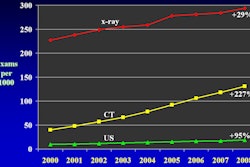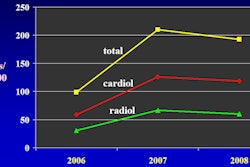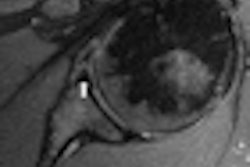Dear AuntMinnie Member,
Breast imagers have gained a new understanding in recent years of the difficulties created by dense breast tissue when performing mammography. But a new study indicates that density may also play a role in determining whether suspicious masses are malignant or not.
That's according to a story by associate editor Kate Madden Yee that we're highlighting in our Women's Imaging Digital Community this week. The article describes a study by researchers from the University of Wisconsin, who examined the density of suspicious masses as a possible prognostic factor in determining malignancy.
And, indeed, they found that suspicious masses consisting of dense tissue were far more likely to be malignant than masses with less dense tissue. Should mass density be added to other factors such as lesion margin and shape in predicting malignancy? Decide for yourself by reading the article.
U.K. radiation exposure is lower
In other news, a new study released this week found that exposure to medical radiation in the U.K. is relatively low compared to other countries, but it's creeping higher.
The study found that the average person living in the U.K. is probably exposed to a level of medical radiation that's five times lower than that of the average person in the U.S. Like in the U.S., the majority of radiation exposure comes from CT.
Why has the U.K. been more successful in holding down dose? Find out by clicking here.
In other news, learn about the effectiveness of computer-aided detection software in screening for tuberculosis in a study by Dutch researchers. You'll find the story by clicking here, or visit our Digital X-Ray Community at xray.auntminnie.com.



















